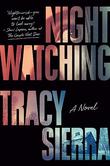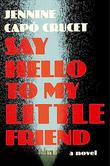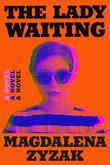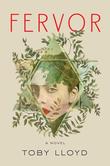
by Jim Shepard ‧ RELEASE DATE: May 12, 2015
Ordinary people reveal dimensions that are extraordinarily cruel or kind.
Awards & Accolades
Our Verdict

GET IT
Kirkus Reviews'
Best Books Of 2015
Kirkus Prize
finalist
An understated and devastating novel of the Warsaw ghetto during the Nazi occupation, as seen through the eyes of a street-wise boy.
Shepard has recently earned more renown for his short stories (You Think That’s Bad, 2011, etc.), but here he presents an exhaustively researched, pitch-perfect novel exploring the moral ambiguities of survival through a narrator who's just 9 years old when the tale begins. He's a Jewish boy living in the Polish countryside with his family and an odd sense of his place in the world. “It was terrible to have to be the person I was,” he despairs, matter-of-factly describing himself as basically friendless, a poor student, and an enigma to his loving mother: “She said that too often my tongue worked but not my head, or my head worked but not my heart.” Yet Aron proves to be engaging company as he describes the selfishness that will help him survive as the world becomes increasingly hellish. The horrors are so incremental that Aron—and the reader—might be compared to the lobster dropped into the pot as the temperature keeps rising past the boiling point. Aron’s perspective is necessarily limited, and he often seems to have little understanding of what’s happening around him or why. His family is pushed into the city, and in the ghetto's chaos, he's separated from them. Serving as a moral counterweight to the boy's instinctive pragmatism is Dr. James Korczak, a real-life Polish Jew whose ambition to “become the Karl Marx of children” inspired him to keep a couple hundred alive through his orphanage, which he supports by begging for funds from the better-off ghetto inhabitants. Aron becomes the doctor’s ward and accomplice, though he has also been serving as an occasional informer for the Gestapo through an intermediary in the Jewish police. He tries to use his position to help save the doctor from being sent to a concentration camp, but the doctor is only interested if he can save all the other children as well. “How do we know if we love enough?” asks the doctor. “How do we learn to love more?”
Ordinary people reveal dimensions that are extraordinarily cruel or kind.Pub Date: May 12, 2015
ISBN: 978-1-101-87431-8
Page Count: 272
Publisher: Knopf
Review Posted Online: Feb. 16, 2015
Kirkus Reviews Issue: March 1, 2015
Share your opinion of this book
More by Jim Shepard
BOOK REVIEW
by Jim Shepard
BOOK REVIEW
by Jim Shepard
BOOK REVIEW
by Jim Shepard
More About This Book
PROFILES

by Georgia Hunter ‧ RELEASE DATE: Feb. 14, 2017
Too beholden to sentimentality and cliché, this novel fails to establish a uniquely realized perspective.
Hunter’s debut novel tracks the experiences of her family members during the Holocaust.
Sol and Nechuma Kurc, wealthy, cultured Jews in Radom, Poland, are successful shop owners; they and their grown children live a comfortable lifestyle. But that lifestyle is no protection against the onslaught of the Holocaust, which eventually scatters the members of the Kurc family among several continents. Genek, the oldest son, is exiled with his wife to a Siberian gulag. Halina, youngest of all the children, works to protect her family alongside her resistance-fighter husband. Addy, middle child, a composer and engineer before the war breaks out, leaves Europe on one of the last passenger ships, ending up thousands of miles away. Then, too, there are Mila and Felicia, Jakob and Bella, each with their own share of struggles—pain endured, horrors witnessed. Hunter conducted extensive research after learning that her grandfather (Addy in the book) survived the Holocaust. The research shows: her novel is thorough and precise in its details. It’s less precise in its language, however, which frequently relies on cliché. “You’ll get only one shot at this,” Halina thinks, enacting a plan to save her husband. “Don’t botch it.” Later, Genek, confronting a routine bit of paperwork, must decide whether or not to hide his Jewishness. “That form is a deal breaker,” he tells himself. “It’s life and death.” And: “They are low, it seems, on good fortune. And something tells him they’ll need it.” Worse than these stale phrases, though, are the moments when Hunter’s writing is entirely inadequate for the subject matter at hand. Genek, describing the gulag, calls the nearest town “a total shitscape.” This is a low point for Hunter’s writing; elsewhere in the novel, it’s stronger. Still, the characters remain flat and unknowable, while the novel itself is predictable. At this point, more than half a century’s worth of fiction and film has been inspired by the Holocaust—a weighty and imposing tradition. Hunter, it seems, hasn’t been able to break free from her dependence on it.
Too beholden to sentimentality and cliché, this novel fails to establish a uniquely realized perspective.Pub Date: Feb. 14, 2017
ISBN: 978-0-399-56308-9
Page Count: 416
Publisher: Viking
Review Posted Online: Nov. 21, 2016
Kirkus Reviews Issue: Dec. 1, 2016
Share your opinion of this book
More About This Book
BOOK TO SCREEN

by Heather Morris ‧ RELEASE DATE: Sept. 4, 2018
The writing is merely serviceable, and one can’t help but wish the author had found a way to present her material as...
Awards & Accolades
Likes

26
Our Verdict

GET IT
New York Times Bestseller
IndieBound Bestseller
An unlikely love story set amid the horrors of a Nazi death camp.
Based on real people and events, this debut novel follows Lale Sokolov, a young Slovakian Jew sent to Auschwitz in 1942. There, he assumes the heinous task of tattooing incoming Jewish prisoners with the dehumanizing numbers their SS captors use to identify them. When the Tätowierer, as he is called, meets fellow prisoner Gita Furman, 17, he is immediately smitten. Eventually, the attraction becomes mutual. Lale proves himself an operator, at once cagey and courageous: As the Tätowierer, he is granted special privileges and manages to smuggle food to starving prisoners. Through female prisoners who catalog the belongings confiscated from fellow inmates, Lale gains access to jewels, which he trades to a pair of local villagers for chocolate, medicine, and other items. Meanwhile, despite overwhelming odds, Lale and Gita are able to meet privately from time to time and become lovers. In 1944, just ahead of the arrival of Russian troops, Lale and Gita separately leave the concentration camp and experience harrowingly close calls. Suffice it to say they both survive. To her credit, the author doesn’t flinch from describing the depravity of the SS in Auschwitz and the unimaginable suffering of their victims—no gauzy evasions here, as in Boy in the Striped Pajamas. She also manages to raise, if not really explore, some trickier issues—the guilt of those Jews, like the tattooist, who survived by doing the Nazis’ bidding, in a sense betraying their fellow Jews; and the complicity of those non-Jews, like the Slovaks in Lale’s hometown, who failed to come to the aid of their beleaguered countrymen.
The writing is merely serviceable, and one can’t help but wish the author had found a way to present her material as nonfiction. Still, this is a powerful, gut-wrenching tale that is hard to shake off.Pub Date: Sept. 4, 2018
ISBN: 978-0-06-279715-5
Page Count: 272
Publisher: Harper/HarperCollins
Review Posted Online: July 16, 2018
Kirkus Reviews Issue: Aug. 1, 2018
Share your opinion of this book
© Copyright 2024 Kirkus Media LLC. All Rights Reserved.
Hey there, book lover.
We’re glad you found a book that interests you!
We can’t wait for you to join Kirkus!
It’s free and takes less than 10 seconds!
Already have an account? Log in.
OR
Trouble signing in? Retrieve credentials.
Welcome Back!
OR
Trouble signing in? Retrieve credentials.
Don’t fret. We’ll find you.





